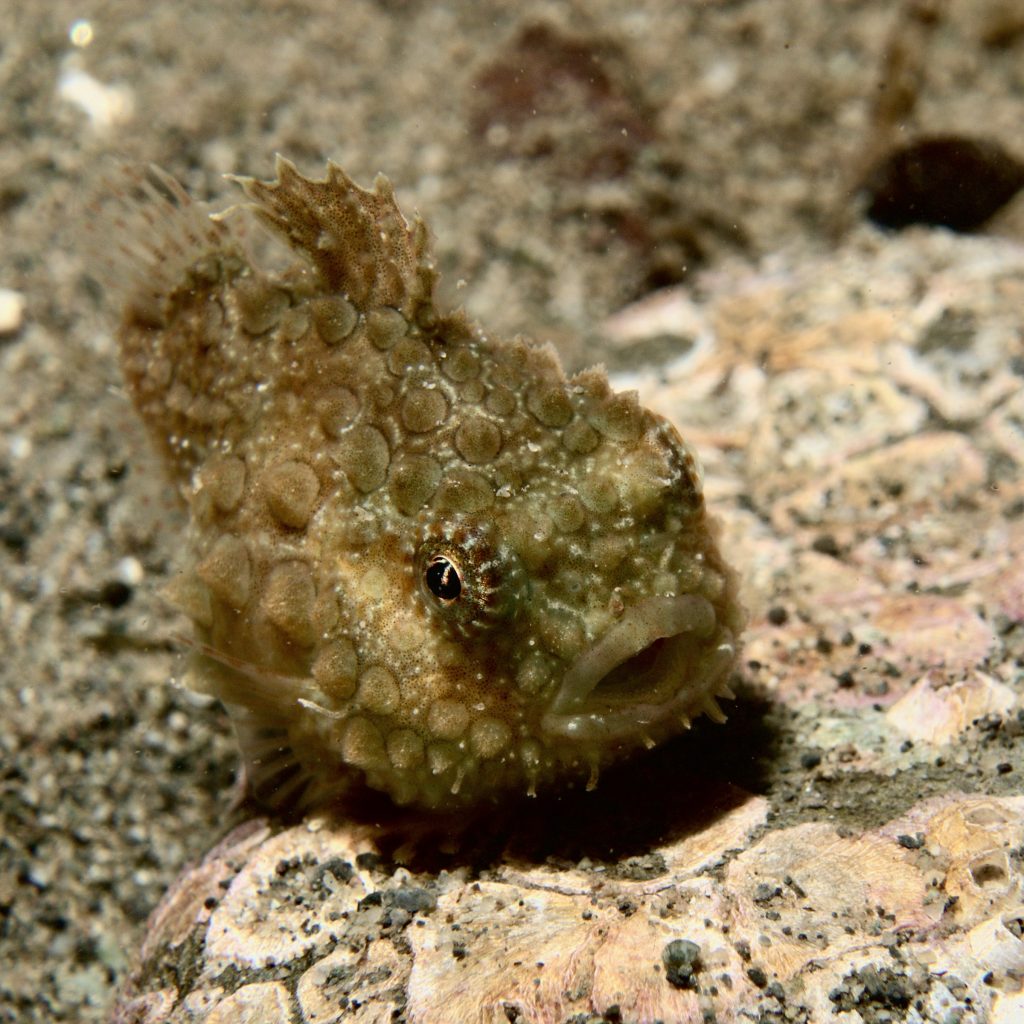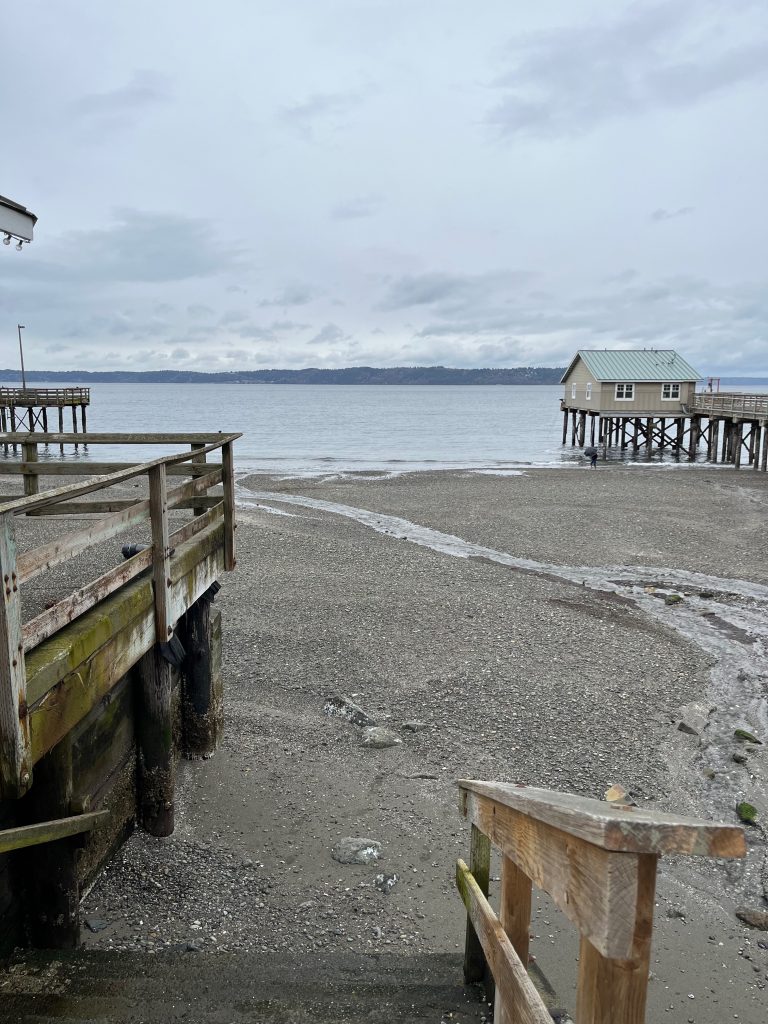
Pacific Spiny Lumpsuckers (affectionately know as ‘Lumpies’) are one of the unique, and possibly most adorable, sea creatures found in the Salish Sea. Normally they can be found around dusk in the late winter and early spring hanging out on broad-leaf kelp and other vegetation in the shallows. The area south of the boat ramp at Redondo in Des Moines, Washington is historically a great place to see them.
I had an opportunity this week to dive with my friends Natalie and Ed at Redondo, but being an early afternoon dive, I didn’t hold out much hope for spotting any lumpsuckers. When I arrived at 2pm, Natalie and Ed had already finished their first dive of the day and were excited to share that they had in fact seen a lumpy, but not in the normal area that we have seen them in the past — they saw one out in the open on the rocky area just outside of the MaST Aquarium pier.

We started our dive on a very low tide with the plan to drop down at the end of the pier to see if we could find the lumpy again. After descending, we spent about 5 minutes shoulder to should looking for him with no luck. We then proceeded down the thick line to the sunken boat known as the carousel boat (due to the old carousel horse that now adorns the bow of the boat.) While down in the area of the carousel boat we saw a juvenile wolf eel (apparently a theme this spring for me) poking its head out from a tire. Then we followed the thinner line that leads from the carousel boat up to the Black Pearl (another sunken runabout that at some point in its life had “Black Pearl” stenciled on its side.) At the Black Pearl, Natalie found the cutest small octopus living in a shell — she is blessed with eagle eyes (or maybe just the patience) to spot small things that the rest of us miss.
After leaving the Black Pearl, we swam upslope to the observation pipe that the Redondo dive site is known for. We saw a nice Monterey Dorid nudibranch there, but not much else. As we had been in the water almost 45 minutes, we headed back up to the pier where we had started the dive. Of course, as soon as we got there Natalie started waving her light and pointing it at a point on the seafloor where, of course, the same chonker of a lumpy they had seen on their first dive was hanging out. We watched it swim around looking derpy for a few minutes before we swam into the shallows to end our dive.
This wasn’t your typical lumpy sighting, but as we’re getting towards the end of the season that we normally see them, I’ll take it.